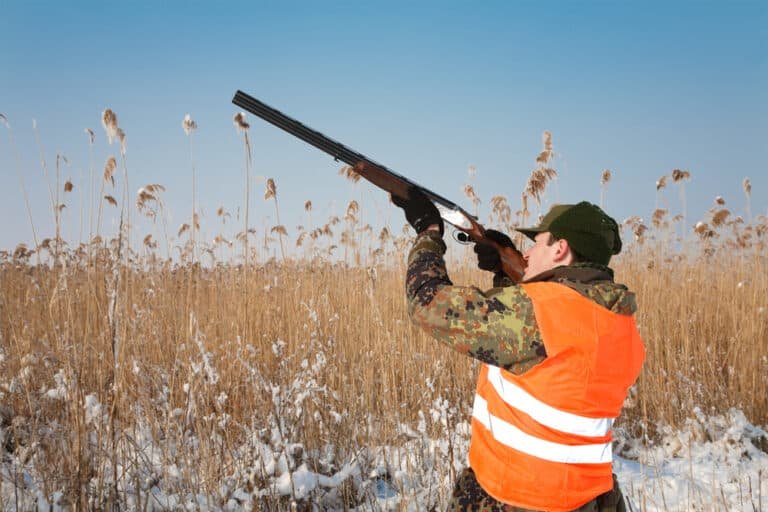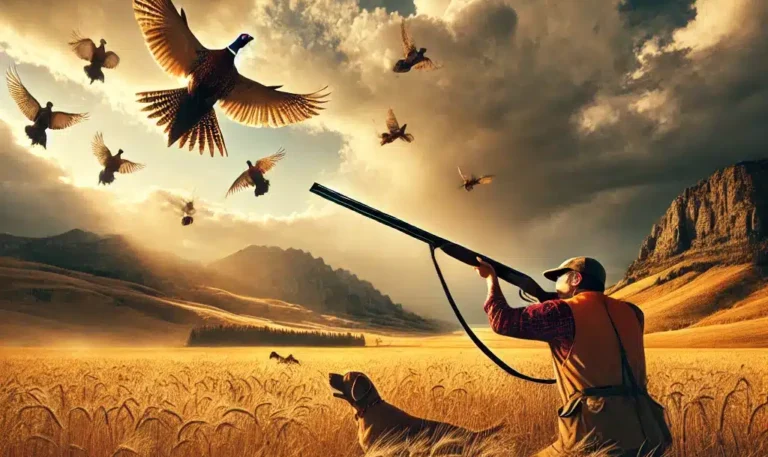Pheasant Hunting: The Ultimate Guide For A Thrilling 2024
The crisp morning air fills your lungs as the sun rises, casting a golden hue over the dew-kissed fields. For those interested in beginner pheasant hunting, this guide will provide tips and guidance for those new to the sport.
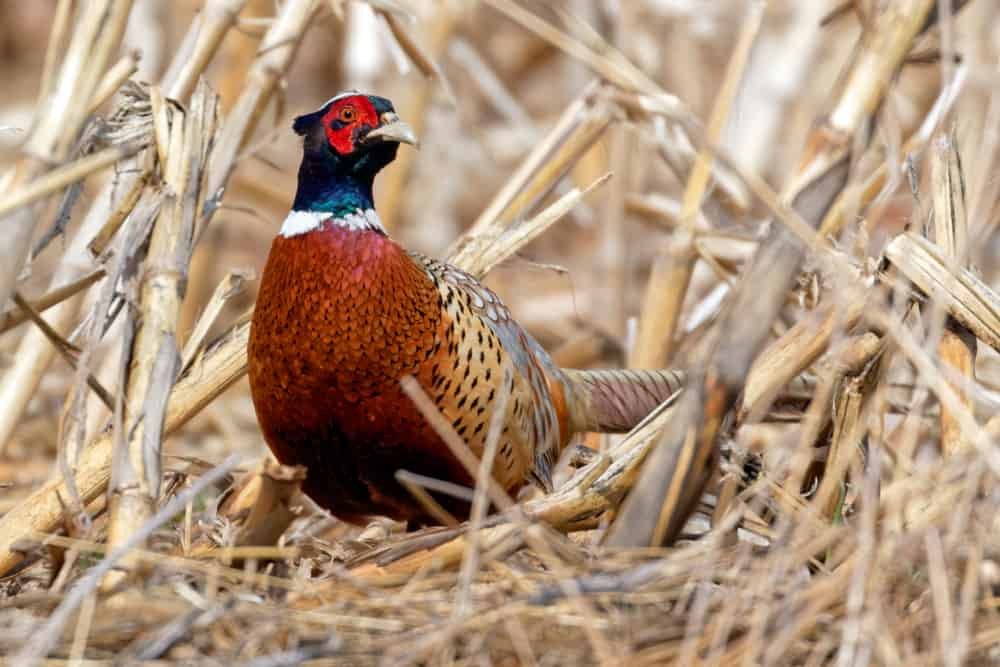
Your heart races in anticipation; the silence is broken only by the distant call of a rooster pheasant. Today is not just another hunt; it’s a pheasant hunting adventure into the heart of pheasant country, where every rustle in the brush could start a thrilling chase.
Introduction
Welcome to pheasant hunting, where tradition meets excitement in the vast, open fields and rolling prairies. As a seasoned pheasant hunter, I’ve come to appreciate the intricacies and challenges that make this sport so captivating.
Whether you’re a novice looking to embark on your first hunt or a seasoned veteran eager for new tips and insights, this blog will guide you through the essentials of pheasant hunting, offering various tips and strategies for effective hunting.
From selecting the right gear and understanding pheasant behavior to master shooting techniques and ensuring ethical hunting practices, join me on a journey that celebrates the art and thrill of pursuing these magnificent game birds.
Why Pheasant Hunting?

Pheasant hunting isn’t just about the thrill of the shot; it’s a test of your skills as a hunter. These magnificent birds are anything but easy targets.
Most hunters prefer using a 12-gauge shotgun and a combination of different ammo loads for various hunting situations.
Masters of Evasion
Ring-necked pheasants boast incredible eyesight and hearing. Their brown and red plumage provides excellent camouflage in their natural habitat. They can erupt from cover in a flush of dazzling colors and disappear just as quickly in a flurry of powerful wingbeats.
This quickness and camouflage demand sharp reflexes, keen observation skills, and the ability to anticipate their movements.
Strategic Thinking
A successful pheasant hunt requires planning and strategy. When hunting solo, consider the strategy of ‘hunting the field inside-out’ by focusing on the middle of the field rather than the edges.
You must decipher their behavior, identify their preferred hiding spots and travel routes, and position yourself accordingly. Understanding wind direction, interpreting animal signs, and learning to read the landscape become crucial elements in outsmarting these wary birds.
Rewarding Challenge
Taking down a pheasant after a well-executed stalk or a perfectly timed shot is an accomplishment filled with satisfaction. It’s a testament to your patience, planning, and ability to adapt in the field.
This sense of accomplishment and the hard-earned reward keeps many pheasant hunters returning for season after season.
Upland Bird Hunting: An Immersive Experience

Pheasant hunting isn’t confined to a shooting range; it’s a full-fledged outdoor adventure involving various upland birds. You’ll be transported to breathtaking landscapes that will leave you feeling revitalized.
A World of Variety
Depending on your location, your hunt could occur in vast open fields bathed in golden morning light, dense woodlands teeming with life, or rolling grasslands stretching towards the horizon. The changing scenery and diverse ecosystems add another layer of excitement to the hunt, making each experience unique.
Certain locations and habitats offer excellent hunting opportunities for upland game birds and pheasants.
Nature’s Symphony
As you navigate the landscape, you’ll be surrounded by the sights and sounds of nature. The crisp morning air, the rustling of leaves, and the calls of unseen birds – all contribute to a truly immersive experience. Spotting other wildlife like deer, rabbits, or foxes can add to the wonder of being out in the wild.
A Break from the Ordinary
In today’s fast-paced world, pheasant hunting offers a much-needed escape from the hustle and bustle of daily life. It allows you to disconnect from technology, reconnect with nature, and appreciate the simple beauty of the outdoors.
Getting Started: Essential Gear for Pheasant Hunters
Pheasant hunting requires the right equipment to ensure a successful, safe, and enjoyable experience. Here’s a breakdown of the essential gear you’ll need:
Well-trained hunting dogs can significantly enhance the hunting experience by locating and flushing out birds.
Firearm

Shotgun: The 12-gauge is versatile, offering good range and stopping power for pheasants. However, it can also produce significant recoil.
Gauge Selection: For less recoil, consider a 20-gauge or 16-gauge shotgun, especially if you’re new to hunting or have a smaller frame. These gauges are still powerful enough for pheasants at moderate hunting ranges.
Ammunition: Choose shells loaded with #4, #5, or #6 shot size. This shot size balances between delivering effective knockdown power on pheasants and minimizing damage to the bird for cleaner processing.
Clothing
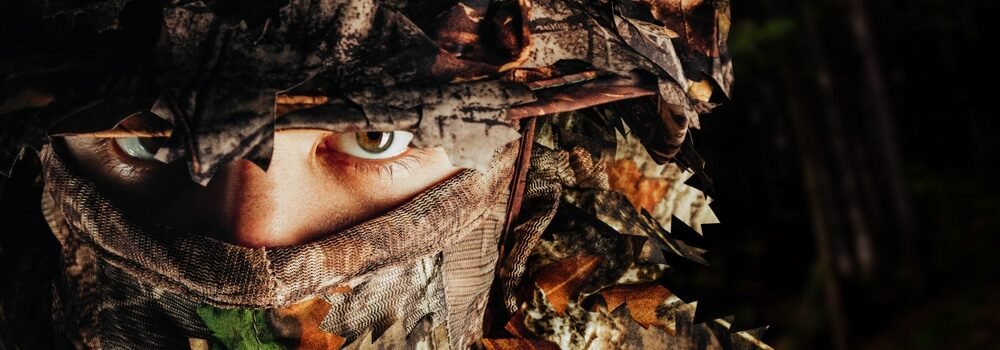
- Comfort is King: Pheasant hunting often involves spending long hours trekking through fields and navigating rough terrain. Choose comfortable, breathable clothing that allows for freedom of movement.
Durable Pants: Canvas or nylon pants are ideal for withstanding thorns, brushes, and getting down on the ground. Look for features like cargo pockets for storing essential gear.
Layering Up: Weather conditions can change rapidly during a hunt. Dress in layers to adjust to the temperature. Start with a base layer made of moisture-wicking material, followed by an insulating mid-layer and a waterproof outer layer.
Footwear: Waterproof boots with good ankle support are crucial. They’ll protect your feet from wet terrain, uneven ground, and potential hazards like thorns or snake bites. Consider insulated boots for colder weather hunts.
Brimmed Hat: A hat with a brim shields your face from the sun and glare, keeping you comfortable and focused throughout the day.
Gloves: Thin, breathable gloves protect your hands from scratches and thorns while allowing for good dexterity when handling your firearm and gear.
Accessories

- Hunting Vest: A hunting vest is a must-have accessory. It conveniently stores ammunition, shells, calls, snacks, and a compass. Look for a vest with blaze orange panels for increased visibility during group hunts.
Blaze Orange: Regarding visibility, blaze orange clothing is mandatory in many hunting areas. It ensures that other hunters see you, reducing the risk of accidents. A blaze orange hat or vest is a good investment.
Game Bags: A game bag lets you properly transport your harvested pheasants while keeping them clean and protected until you can process them.
Shooting Glasses: Shooting glasses protect your eyes from stray pellets or debris that can get kicked up while firing your shotgun.
Hearing Protection: Ear protection is essential for dampening the loud reports of your shotgun blasts. Choose from earplugs or earmuffs, whichever you find most comfortable.
Finding Pheasants: Scouting & Habitat
Unearthing where pheasants reside is a crucial element in any successful hunt. State wildlife agencies offer resources and opportunities for mentored hunts and high-quality hunting experiences.
Here’s a deep dive into pheasant habitat and effective pheasant hunting tips:
Prime Pheasant Habitat
Pheasants are like culinary adventurers, requiring a diverse array to thrive. Here’s a breakdown of the ideal pheasant habitat:
Cover Crops: Imagine a pheasant’s perfect hideaway—dense corn, sorghum, or millet fields. These crops provide much-needed security from predators and harsh weather and serve as nesting grounds during breeding season.
Feeding Grounds: No feast is complete without the main course! Pheasants are omnivores, enjoying a varied diet of grains, seeds, insects, and even small reptiles. Look for areas with abundant grain fields, grassy patches, or weedy borders where pheasants can find a nutritious meal.
Water Sources: Like humans, pheasants need to stay hydrated. Streams, ponds, or even man-made watering holes become magnets for these birds throughout the day.
Scouting These Wild Birds
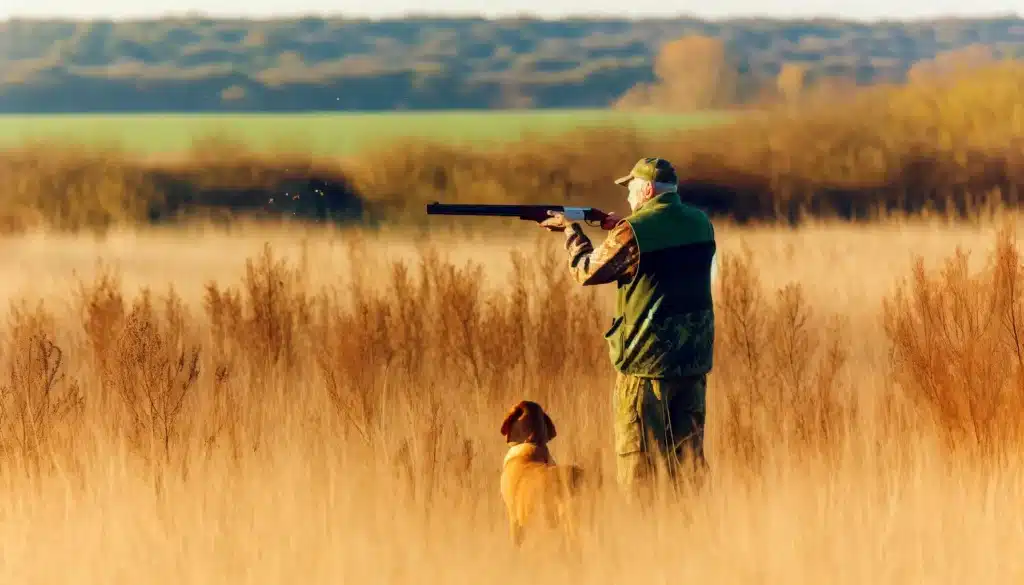
Now that you know what a pheasant’s dream home looks like, it’s time to hone your scouting skills. Here are some tips to help you locate these feathered friends:
Sign Language: Pheasants leave behind clues about their presence. Look for scratched soil near feeding grounds as they use their feet to unearth hidden seeds and insects. Droppings are another telltale sign; pheasant droppings are typically dark and have a whitish urine cap.
Roosting Sites: Imagine a luxurious pheasant penthouse suite – dense shrubs, thickets, or tree lines bordering fields provide ideal nighttime roosting spots. Look for areas with this type of cover close to feeding grounds and water sources.
Following the Trails: Pheasants are creatures of habit, establishing regular travel routes between feeding areas and roosting sites. These “travel corridors” are often marked by natural features like hedgerows, creek beds, or fence lines that offer pheasants both cover and a clear path. Look for these natural funnels as potential pheasant highways.
Public vs. Private: Choosing between public and private lands depends on your adventure preference. Public lands offer vast, untamed wilderness for the explorer at heart. Scouting these areas requires more effort but provides a sense of accomplishment when you find a productive hunting spot.
Techniques for Success: Outsmarting the Wary Pheasant
Now that you’ve identified the prime pheasant habitat and honed your scouting skills, it’s time to delve into successful hunting techniques. Remember, pheasants are clever birds, so planning and strategy are key.
Travel Corridors: Pheasants are creatures of habit, establishing well-worn routes between feeding and roosting areas. Identifying these “corridors” is crucial for positioning yourself for a successful shot.
Reading the Landscape: Observe the terrain between feeding grounds and roosting sites. Look for natural features that pheasants might use as travel paths, such as hedgerows (rows of shrubs or small trees), creek beds, or established trails. These areas provide pheasants with both cover and a clear path for movement.
Positioning Yourself: Once you’ve identified a potential travel corridor, position yourself strategically downwind (with the wind blowing from behind you) and out of sight, ideally near the feeding grounds where pheasants will most likely be relaxed.
Practicing sporting clays can help hunters fine-tune their skills and prepare for the hunting season.
Hunting Pheasants Using Dogs: A Canine Companion
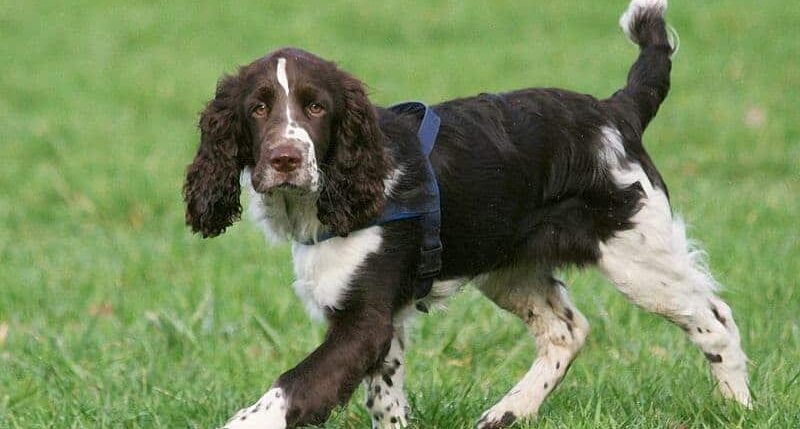
A well-trained canine companion can be an invaluable asset on a pheasant hunt. Here’s how dogs can elevate your experience:
Tracking & Flushing: Certain breeds, such as German Shorthaired Pointers or English Springer Spaniels, excel at finding pheasants hidden in the cover. They can skillfully track a bird’s scent and flush it out into the open, creating a perfect shot opportunity.
Retrieving: Labrador Retrievers are renowned for their retrieving abilities. After a successful shot, your dog can efficiently retrieve your pheasant, saving you time and effort in the field.
Increased Efficiency: Dogs can cover more ground than humans, significantly increasing your chances of encountering pheasants. They can also navigate dense cover that might be difficult for hunters to traverse alone.
Late-season hunters often put away their shotguns before the snow flies, but those who brave the elements can find rewards in heavy game vests and more accessible cattail marshes.
Pheasant Hunters – Beyond the Basics: Respecting the Laws & the Land
Know Your Regulations: Research and adhere to all local hunting laws and regulations. This includes understanding bag limits (the number of birds you can legally harvest), hunting seasons (specific times of year when hunting is permitted), licensing requirements, and any restrictions on dog use. Staying updated on any regulation changes throughout the season is crucial. Also, note the difference between public and private land.
The Bond Between Hunter & Dog: More Than Just a Tool
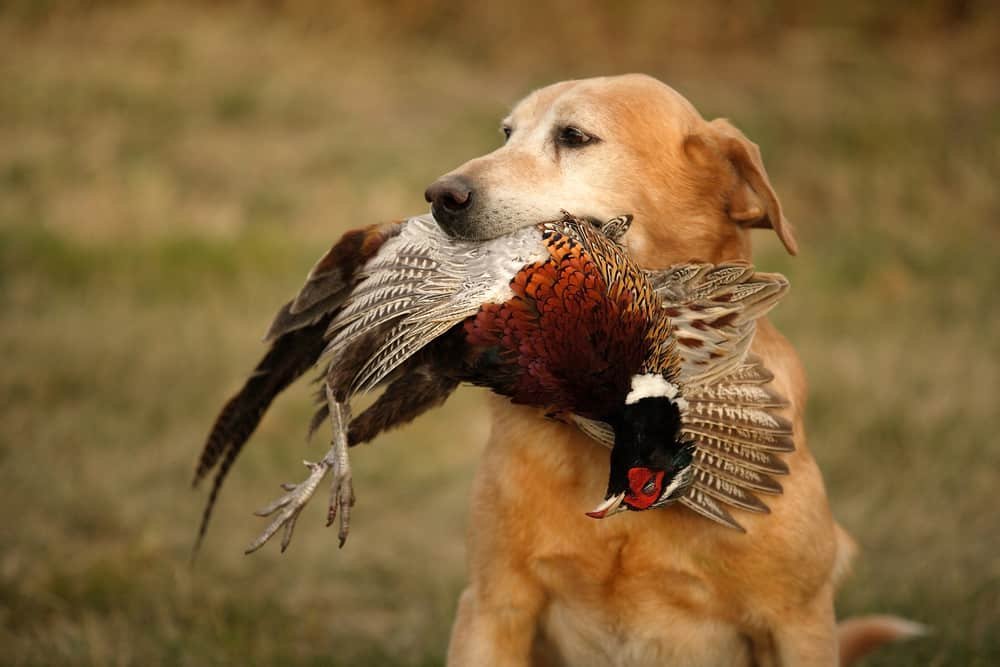
Training a hunting dog is an investment that goes far beyond acquiring a helpful tool. It’s about building trust and a lasting partnership.
Building Trust: Through consistent training and positive reinforcement, you’ll create a strong bond with your dog based on mutual respect and understanding.
A Loyal Companion: A well-trained hunting dog becomes more than just a tool; it becomes a loyal companion in the field. You’ll share countless adventures, forging a deep and rewarding connection.

